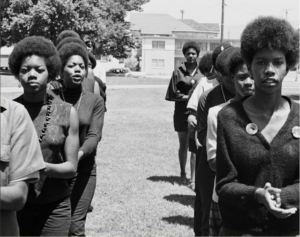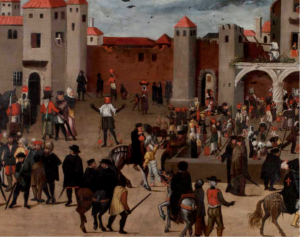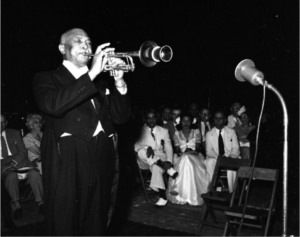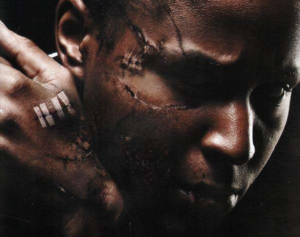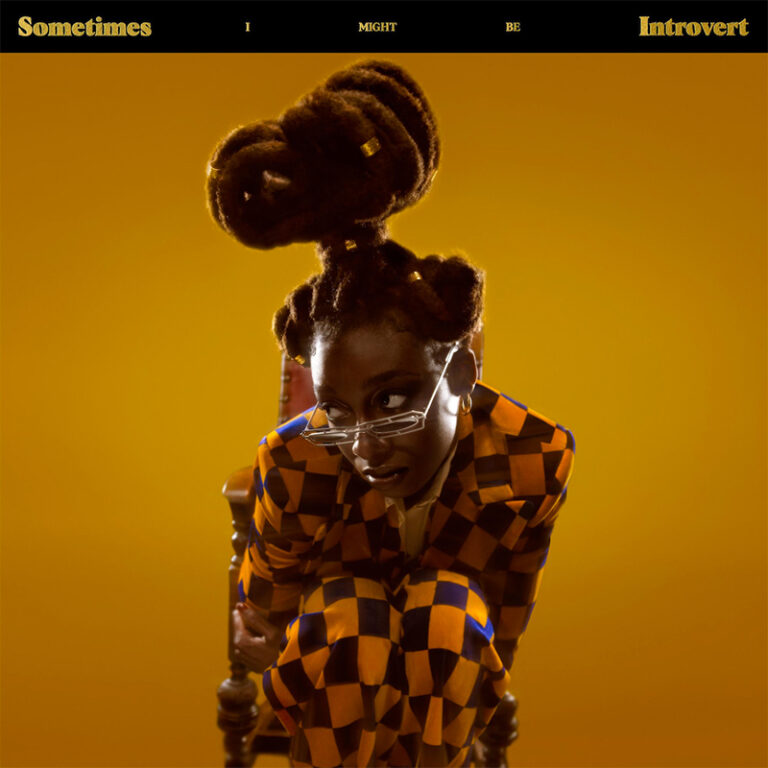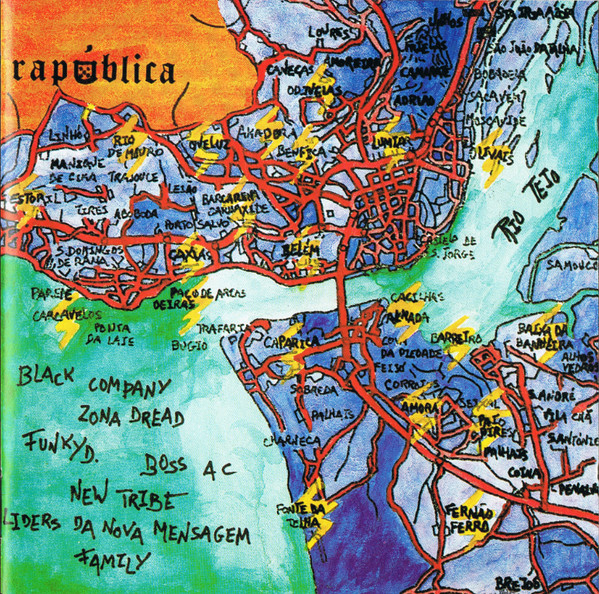From jazz to rap, from the United States to Europe (EN, FR)
- anneauxdelamemoire

- 27 mars 2023
- 7 min de lecture

From jazz to rap, perspectives and musical evolutions in the post-slavery world, from the United States to Europe
Mylène
Jazz: the musical heritage of slavery?
The period of enslavement and the plantation economy in the United States was marked by violence. Although abolition occurred in 1863 with Abraham Lincoln’s proclamation of the “declaration of emancipation”, this was nevertheless followed by segregationist legislation. In terms of music, this period witnessed the emergence of musical practices created by slaves, former slaves, or freedmen, which then evolved in resonance with the various political and social events in the United States. From work songs—songs accompanying the forced labour of slaves on plantations—to blues—a forbidden music representative of the figure of the vagabond or freed black slave singing their pain—the descendants of the displaced and enslaved African men and women developed new musical forms. The same may be said for jazz which, around the same time, became a representative expression of the period of emancipation. If jazz used the codes, songs, and music from the period of enslavement, it was very much a style in its own right and evolved according to the migrations and displacements of the African American populations over history. This was the case after the two world wars when populations of African descent headed north to find work in the mechanics industry, for example. Dealing with subjects like access to employment, segregationist laws which physically separated the Black and White populations in public places, and even living conditions after the period of enslavement, jazz artists produced, composed, and responded to such issues in their ever-evolving scores and compositions.
Artists, jazz, and slavery
For example, the lynching of the American population of African descent inspired the disturbing and powerful interpretation of the track (1939, Commodore Records) by singer Billie Holiday. The ban against nine African American students at the Little Rock university campus by Governor Faubus (1957) inspired multi-instrumentalist Charles Mingus to write (1959, Columbia Records). An attack by the Ku Klux Klan on the church of Birmingham in Alabama (1963) inspired the pianist and singer Nina Simone to write
(1964, Philips) and John Coltrane the track
(1963, Impulse!). Therefore, in the very themes of certain tracks by African American jazz artists, as well as in the melodies, the playing, or even the compositions, we can hear the revival of the post-slavery context. This is certainly found in free jazz, which assumes its stylistic and classical emancipation from early jazz experiments and gives pride of place to improvisation. Ornette Coleman (to whom we owe the album
in 1960), Archie Shepp, Sun Ra, and singer Jeanne Lee are just some examples. Musical expression no longer merely comprised the acknowledgement of a violent event, but rather the way in which African American artistic creation could develop a current of its own in a context where the civil rights movement was growing in scale.
In other words, while jazz can be seen as a cousin of blues and work songs, it nevertheless offers more of a social chronicle of the situation of African Americans following abolition in the United States. When hip-hop emerged in the early 1970s, the legacy of these jazz artists was not far off.
The sample: connecting jazz and hip-hop in the United States
While jazz did not directly contribute to the birth of hip-hop, it participated in its development through fragments and sampling (the practice of isolating a musical extract to reinsert it, often in a loop, into a new original track). One simply has to list the number of jazz samples used by rap producers to realize this. In 1973, hip-hop was born from the initiative of DJ Kool Herc (Clive Campbell) and his sister Cindy Campbell at the first party they organized together. The siblings, of Jamaican descent, lived in the Bronx in New York. For this first evening, they made use of the codes of Jamaican sound systems against the violent context of clashes between rival gangs. From this moment and these parties onwards, the hip-hop movement spread throughout the East Coast of the United States. Instrumentally, hip-hop tracks began from a funk loop. Later, sampling made its appearance, opening up a whole discography of artists, whether jazz, funk, or disco, and the technique was used to compose the first rap songs. Common in hip-hop music, the sample is used both to compose and to express a certain opinion given by the rapper. For example, rapper Talib Kweli—Talib Kweli & Hi Tek,
(Rawkus, 2000)—samples Nina Simone’s
and re-adapts her , right down to the lyrics. This readaptation () allowed Talib Kweli to continue the story of the four little African American girls that Nina Simone had sung about, in order to depict American society in the 2000s, in turn.
Circulation, hybridity, and European discourse
hip-hop arrived in the 1980s. The story of the formation of rap group NTM, told in the recent documentary series
, relates this well. The context was not quite the same as that in the United States. Nor was it entirely free of American inspiration. Groups like NTM, IAM, Saïan Supa Crew, and La Cliqua were formed, inspired by American groups like Public Enemy, Run DMC, Wu Tang Clan, or even EPMD.
A mode of expression, rap (the verbose dimension of hip-hop) was also an opportunity to express an experience, a social situation, or a way of relating the daily life of an out-of-sync youth, on the margins of society, and/or on the geographical outskirts of large cities. For some singers or groups, the texts or melodies allowed them to pursue a discourse on the consequences of the history of enslavement and the colonial situation on migrating populations. For example, the group La Rumeur claimed that their rap was made “by the sons of immigrants”.
Ekoué, , Album
(2002, EMI)
Ekoué, , Album
(2002, EMI) The same observation is possible, in the early 2000s, with Casey (
, 2010) and Rocé. The latter regularly questioned the consequences of colonization in his albums by taking up the stylistic codes of the sample (
by Nina Simone,
by Georges Moustaki, or
by Nancy Wilson, for example), and by punctuating his albums with guests and/or references to the free jazz scene, as he did on (No Format! 2006), where he invited American trumpeter Archie Shepp and French saxophonist Jacques Coursil.
, hip-hop and rap took another path and evolved differently. Considered more as underground styles of music, they are associated with the populations of second-generation immigrants from the former British colonies (British West Indies, Nigeria, Ghana). They are the expression of everyday life and social resurgences from the period of colonization. They tend to draw musical inspiration from American jazz (Outlaw Possee from London, Kinetic Effect, Freakin’ Inglish from Manchester). Their later rapprochement to electronic music led to the creation of new sub-genres like grime in the early 2000s. The lyrics of artists like Dizzee Rascal, Lethal Bizzle, and Wiley, do not tackle slavery but instead, the everyday life of the descendants of immigrants. In a sense, listening to these groups often amounts to a social chronicle of England in the 2000s, in particular that of the multicultural populations living in the big cities.
In recent albums, rapper Little Simz has denounced the discrimination encountered by the Black British population. (2021,
and 2022,
).
A rather similar discourse can be found in
. The lyrics of the artists allow us to understand how this musical genre enables them to express the heritage of the Portuguese colonial period. Portugal has one of the longest histories of colonization. Amongst the members of the Portuguese rap scene, some are the descendants of former Portuguese colonies (Angola, Mozambique, and Cape Verde). Emerging in the late 1980s in the neighbourhoods of large cities like Porto and Lisbon, then spreading around the country via compilations like in 1994 (or
, 2000), a fringe of Portuguese rap expresses the conditions in which the former live. For example, rapper Boss AC sees “in the slums, hungry people who don’t eat”. This social description opens the first verse of
(on the
compilation: “Vejo nos bairros degradados/Gente com fome que não come”). The group Zona Dread used the genre to express their experiences of discrimination in 1994: “We just want to be equal, no more, no less” (Só queremos ser iguais/Nem ser menos, nem ser mais—lyrics from
, also on the
compilation).
If over time and on a European scale, Portuguese rap is somewhat discreet, the scene remains active nationally. For example, “A História do Hip Hop Tuga” is a regular festival that brings together the country’s top rap and hip-hop artists. A new edition of the festival is programmed for 2023.
From jazz to rap, several decades, even a century, have passed. However, the experiences (enslavement, emancipation, abolition, then racial segregation) of the artists, who were at the origins of jazz and its derivatives in the early 20th century have led the Black American and European populations of the 21st century to draw inspiration from the genre both stylistically and melodically. It is also a way for these artists to share their perceptions of the impact of this historical period on contemporary societies.
Further information:
🔶 Series
by Katell Quillévéré, Hélier Cisterne, and David Elkaïm (2022) 🔶 De Almeida Mendès António. “Les réseaux de la traite ibérique dans l'Atlantique nord (1440-1640)” in
, 2008/4 (63e année), p. 739-768. Available online:
🔶 Otávio Raposo. “Le Red Eyes Gang, entre métissage et affirmation de la négritude” on the following website
2010. Available online: HERE
Discover other European artists:
🔶
: Soraia Simões de Andrade, “Para uma história do RAP em Portugal: referências em Portugal e as primeiras rappers mulheres”, Buala.org. Can be consulted online: HERE
: Dobleache, “Le hip hop espagnol lui aussi a une histoire”. Article mentioning the group known as El Club de los Poetas Violentos who take their inspiration from African American political movements. Can be consulted online: HERE
: Rapper Winne:
Table of Contents
Mylène is a music writer and radio producer, as well as the author of a number of sound programmes and documentaries. Her interests lie in the history of music and sound hybridities. She is also a history researcher.
Table of Contents
Jacques Boucaya and Jean-Pierre Peyrebelle.
. Toulouse: Presses Universitaires du Mirail, 2001, 223 pps. Jeff Chang.
. Trans. Héloïse Esquié. Paris: Editions Allia, 2006, 670 pps. Mathilde Hirsh and Florence Noiville.
. Paris: Editions Tallandier, 2019, 332 pps. Jean Jamin and Patrick Williams.
. Paris: CNRS Editions, 2010, 382pps. LeRoi Jones.
. Paris: Gallimard, 1968, 333 pps.
Print PDF 🇬🇧
SEE MORE

